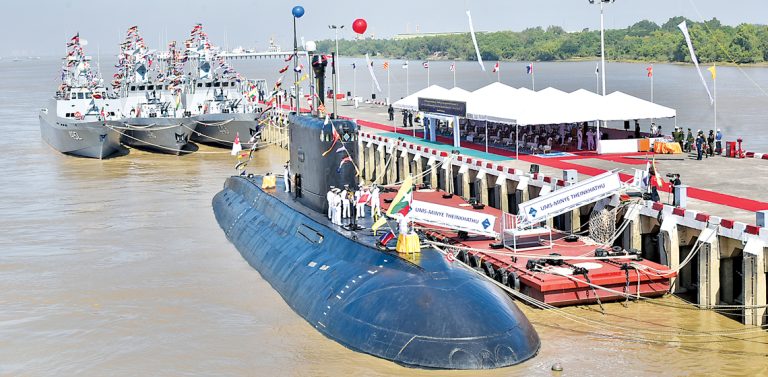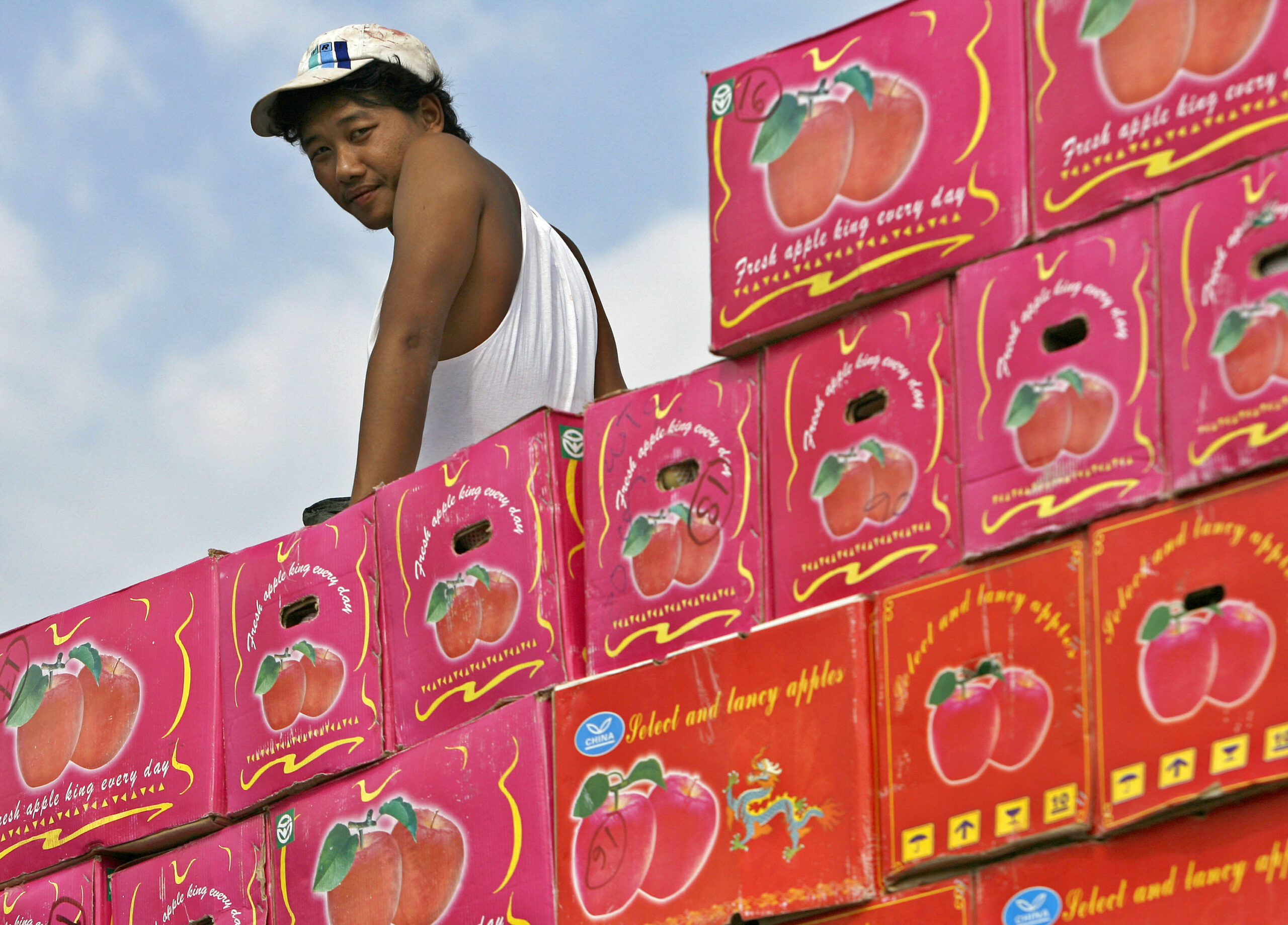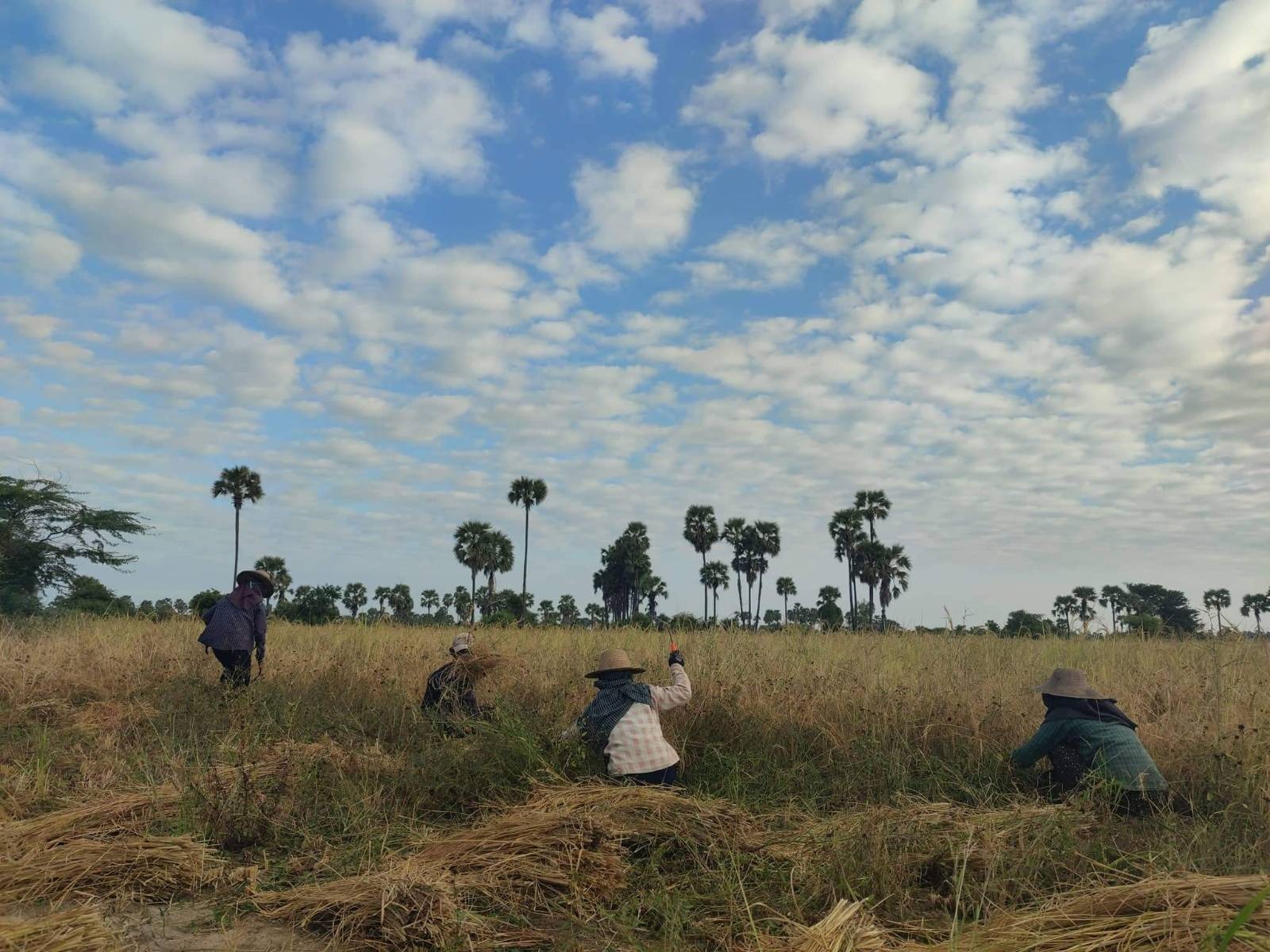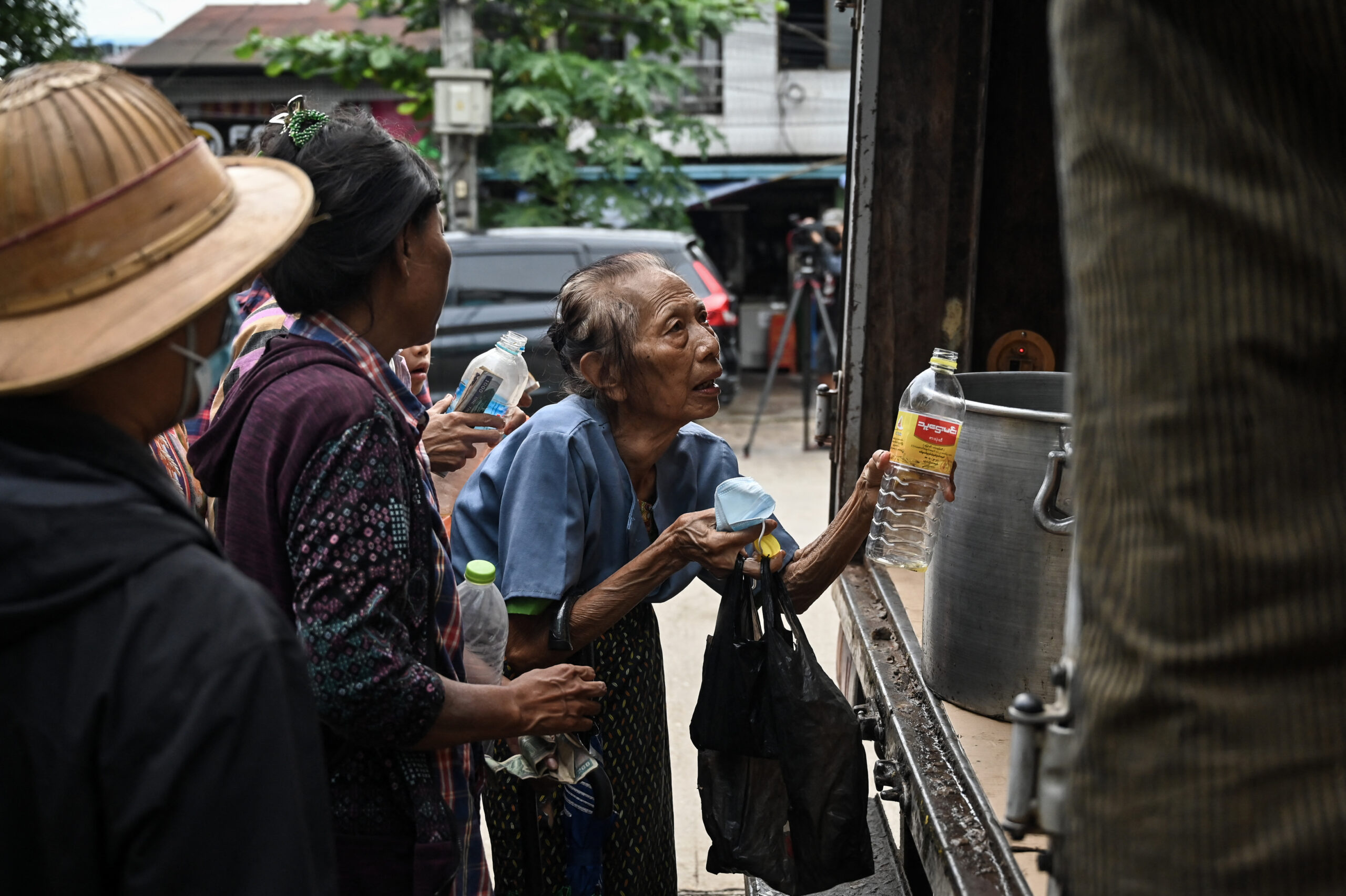Most dairy products in Myanmar are imported, and most local dairy operations are miniscule, but that could soon change.

Myanmar’s dairy industry is poised for growth. (Ann Wang / Frontier)
Every morning, Ko Rajesh, 20, wakes at three o’clock – well before the crack of dawn – to perform the laborious task of milking his family’s 40 cows.
“I usually do all the milking myself. It’s just faster,” he said. “My two brothers help sometimes, but they just aren’t as fast as I am.”
The family’s farm in Yangon’s outer suburban North Okkalapa Township, barely 300 metres from the heaving smokestacks of Yay Way crematorium, is a far cry from stereotypes of bucolic pastoralism. The family has been unable to secure a plot big enough for its entire herd and pens its cows at three different locations in the working-class township, cheek-by-jowl with their human neighbours.
“This is a residential area – not a field. It’s not so easy,” Ko Rajesh said.
Most of the milk produced in Myanmar, 85 percent, comes from small farms such as that owned and operated by the brothers, said Dr Khin Hlaing, the secretary of the Myanmar Dairy Association, which represents the interests of about 30 large-scale dairy producers and processors.
“The dairy industry is growing. [But] we are about 20 years behind the Thai dairy business,” Dr Khin Hlaing said. “Our production can’t meet local consumption. We have to import, every year, mostly milk powder, condensed milk cans and evaporated milk from abroad,” he said.

Myanmar’s dairy industry is poised for growth. (Ann Wang / Frontier)
Ko Rajesh and his brothers sell what they produce to teashops and directly to the public. At about 8am each day, they load a heavy metal jug – filled with plastic bags of milk – onto a public bus. It usually takes them two hours to reach Bahan Township, in the shadow of the Shwedagon Pagoda, where they set up a stall to sell their wares.
After another round of milking in the early afternoon, they make another trip downtown. Time is of the essence: if they’re tardy, their efforts will be for naught. “If you milk a cow at 2pm, the milk can go without refrigeration until about 10pm,” Ko Rajesh said. “But after that, if you don’t want it to spoil, you need to refrigerate it.”
Better connections with the outside world and gradually changing tastes have prompted greater demand for dairy products. In fiscal year 2014-2015, Myanmar imported dairy products worth US$113 million (about K132 billion), a figure that has increased steadily over the past few years.

Ko Rajesh, right. (Ann Wang / Frontier)
“We sell everything that we milk every day, so we don’t need to store the milk,” Ko Rajesh said. “On any given month, there are maybe one or two days where we don’t sell out entirely. It’s a good business,”
Dr Khin Hlaing anticipates that demand can only grow. In 2012, his association, in cooperation with a Dutch company, launched a program that provides schoolchildren with free milk to improve their protein intake. Today, the program benefits some 60,000 students, mostly in Yangon, Mandalay and Nay Pyi Taw.
This early familiarity with dairy products, he feels, will result in increased demand in the future.
“[Young people] consume milk at school, and when they grow up they will choose dairy products,” he said. “Also, people are going abroad, and they come back, and they have a taste for milk.”
For now, however, fresh milk products do not factor prominently in the Myanmar diet. “Our Myanmar people rarely take pasteurised milk or boiled milk every day,” Dr Khin Hlaing said. “It is not our staple food.”
Tea shops – a ubiquitous fixture in Myanmar’s social life – are one place where almost every body consumes dairy products. Millions of cups of tea, blended with copious quantities of condensed milk, are served every day throughout the country. Most of what is consumed is imported, however. “Myanmar’s processors cannot compete on price or quality with imported brands,” Dr Khin Hlaing said.

Myanmar’s dairy industry is poised for growth. (Ann Wang / Frontier)
Myanmar’s few condensed-milk factories are mostly located around Mandalay, and farm-gate prices paid to farmers there are lower than in Yangon. Because cold chains – refrigeration infrastructure – is lacking, milk cannot be transported for long distances, or stored safely.
“Up to now, the infrastructure for cold chains needs electricity, which we cannot get regularly,” Dr Khin Hlaing said. “It’s not so much an issue on the production side, but we need to store pasteurised milk at supermarkets and other outlets. At this time, temperature control is a big problem.”
Pasteurised milk, yoghurt and ice cream, the products made by Myanmar’s industrial-scale producers, are considered luxuries. Increasing demand for powdered milk, sourced from abroad, will not affect their bottom line because of the distribution hassles associated with transporting fresh milk. “Now, local processors who produce ready-to-drink milk [products] have a niche market,” Dr Khin Hlaing said.
Although the shelves of Myanmar’s supermarkets are stocked with UHT (ultra-high-temperature) milk that does not need refrigeration, there are no factories in the country capable of producing UHT milk.
U Thet Tun and his brother-in-law own a small dairy farm in North Okkalapa Township, and unlike Ko Rajesh and his brothers, who sell to consumers directly, most of what they produce goes to one of these ‘luxury’ producers: an ice-cream factory in Yangon. While the steady business is good, there are drawbacks. “If you sell to big buyers, the profits aren’t as high as they are from individuals,” U Thet Tun said.

Myanmar’s dairy industry is poised for growth. (Ann Wang / Frontier)
As is the case at most of Myanmar’s dairy farms, U Thet Tun, his brother-in-law and their seven workers milk cows without the aid of machines. As the kyat continues to depreciate, the cost of inputs – such as feed and medication – have risen. Although he pays his workers K6000 ($5) a day, he acknowledges that construction jobs pay more, making it difficult for him to source labour.
Although imported UHT milk could crimp his sales if Myanmar consumers come to see it as an acceptable substitute, Dr Khin Hlaing believes this is unlikely to happen.
“Most of the imported products are processed from milk powder. Most Myanmar people don’t like UHT milk, which is good for local producers,” he said. “All of the ready-to-drink products in Yangon and Mandalay are processed from fresh milk.”
Regardless, the lives of Myanmar’s dairy farmers are likely to remain challenging for the foreseeable future. Unlike neighbouring Thailand, where the government has a quota system for dairy farmers to support the production of UHT milk, there are no such provisions in Myanmar – something Dr Khin Hlaing wants to see changed, particularly before Myanmar’s first UHT milk factories come online in the future.
As Myanmar’s economy has begun to diversify after years of stultification, long hours, back-breaking labour and smelly, dirty working conditions will invariably prove less appealing. Although U Thet Tun makes a comfortable living, returns from dairy products are low when compared to the capital outlay required to produce milk. He could earn a small fortune – $1500 for each of his 35 cows – if he sold them, but the family has been in the dairy business for 40 years.
“It’s been something that I’ve been set to do since I was a child, because my father did this, as well,” he said. “But it’s not exactly what I would call a good line of work.”







